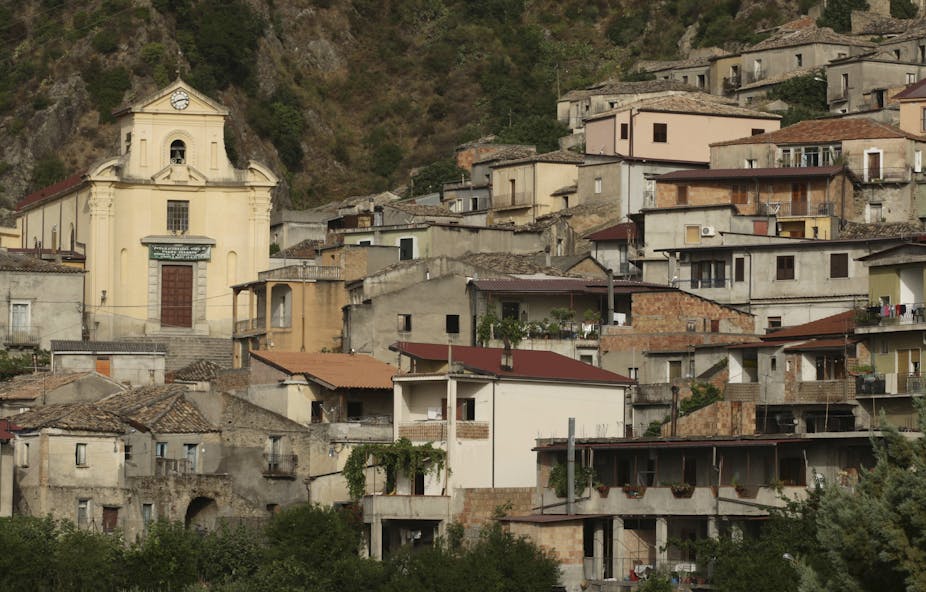Made famous by Hollywood blockbuster The Godfather, the mafia has been elevated to organised crime folklore status. While it seems a distant Hollywood stereotype for many, an ABC Four Corners report showed that the mafia’s threat as a current organised crime danger for Australia is real.
So, what actually is the mafia? How does it operate? And what kind of criminal threat does it pose?
The making of the mafia
Originating in Italy, the mafia is one of the oldest organised crime groups in the world. European criminal intelligence agency Europol’s threat assessment listed four Italian mafia-type organisations – the Sicilian Mafia, the Calabrian ‘Ndrangheta, the Neapolitan Camorra and Apulian Organised Crime.
The FBI estimates that the four groups have approximately 25,000 members in total with 250,000 affiliates worldwide. The US mafia has around 3000 members.
While these groups share some general characteristics, each does have distinguishing features. Central to, and common to, all mafia groups is the importance of power, family, respect and geographic territory. In general terms, mafia groups are run by a boss who exercises general control of the family and makes leadership decisions. There is an underboss who is second-in-charge.
There is a senior adviser or “consigliere”. Underneath this are a number of “capos” or managers, who supervise the crews of soldiers or “made men”. Made men are all male and all of Italian descent. There are also a number of associates who are career criminals but not made members.
The capos and those above them take a share of the proceeds from the crimes undertaken by the soldiers and associates. The criminal enterprises are not necessarily run by the bosses or capos, but the latter are paid from the profits for services rendered, and for their association with the enterprise.

A good business model
The mafia’s operational tools include the usual organised crime techniques of the use of – and threat to use – violence, corruption and monopolisation of markets. But it has also displayed a general business acumen that allows its structures to be entrepreneurial, opportunistic and adaptable in nature.
Just how successful the mafia is is shown by one study that estimated that its proceeds of crime could be as high as ten billion euros for the Italian crime groups. The FBI estimates that the mafia generates an annual worth of US$100 billion worldwide through criminal activity.
It has been suggested that the mafia is the biggest business enterprise in Italy. In Europe, the mafia is heavily involved in the drug trade, money laundering, corruption, waste trafficking and counterfeiting. It operates in similar markets overseas. There is no evidence to suggest that the situation is vastly different in Australia.
As well as illicit trade, the mafia has expanded into licit trade. This was noted in the Europol assessment:
Italian OCGs [organised crime gangs] today are the only EU economic competitors that suffer the opposite problem of all other entrepreneurs: too much cash money and not enough possibilities of reinvestment.
The map below clearly indicates how the mafia has infiltrated a range of legitimate businesses across Europe. This was mirrored in the Four Corners report with mention made of involvement in legitimate markets. The Australian Crime Commission has noted the mafia’s ability to infiltrate legitimate businesses and exploit economic conditions.

The ‘Ndrangheta
The Calabrian 'Ndrangheta was the focus of the Four Corners program on mafia activity in Australia. Europol noted that the ‘Ndrangheta, through the investment of its large capital reserves (from criminal proceeds) in legitimate business structures, has been able to achieve a position of quasi-monopoly in selected sectors – such as construction, real estate and transport.
The 'Ndrangheta has a hierarchical structure and has shown the ability to penetrate the political and economic systems in the countries that it operates in. These include Spain, France, the Netherlands, Germany and Switzerland, with some movement into Eastern Europe. The ‘Ndrangheta also has a strong presence in Canada, the US, Colombia and Australia.
The ‘Ndrangheta has a remarkable ability to carry out corrupt activities. The operational structures of the group, the ‘Ndrine (or clans) and the Locali, are easily copied overseas. However, these sub-branches still fall under the Calabrian Crimine’s overall control.
The Europol threat assessment noted that the ‘Ndrangheta is among the richest and most powerful organised crime groups globally. In a further example of its business acumen, it has a dominant position in the European cocaine market due to excellent relations with the producers.
The Four Corners report would suggest that it is a major player in Australia’s drug market.
The threat to Australia
The most recent Australian Crime Commission report on organised crime reveals only two mentions of mafia groups in passing. There is no observation of the major role they play in Australia’s organised crime world.
More attention is paid to outlaw motorcycle gangs. However, my analysis has shown that these gangs are simply not the main players in the organised crime markets.
Law enforcement agencies have been aware of the danger the mafia poses. As early as 1991, warnings were being made about the activities and criminal potential of the Calabrian 'Ndrangheta in information contained in an Australia Bureau of Criminal Intelligence report.
What is most concerning, though, is the lack of co-ordination exhibited in the law enforcement approach to the mafia. Media reports indicate that members of the mafia have freely being accessing casinos in Queensland despite being banned interstate and Queensland police being aware of these visits. The state is now perceived as a soft target for money launderers and underworld figures.
Perhaps it is time for Australia’s law enforcement agencies to focus less on the obvious low-level players and more on the sophisticated main players who operate out of the public eye.

